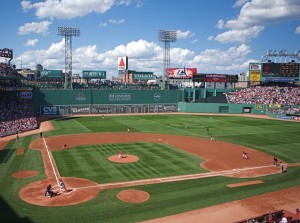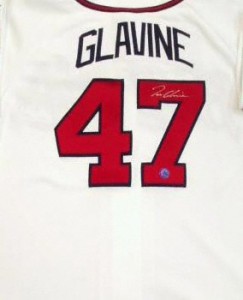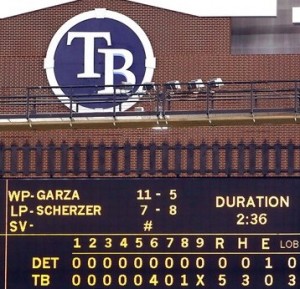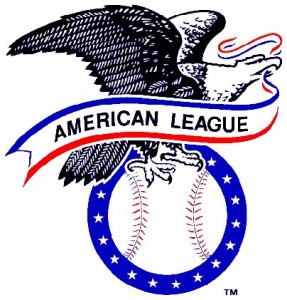The month of July (specifically the last week) is always a busy time for Major League Baseball. The All-Star game is fun, but the real action comes at the end of the month, when MLB reaches its non-waiver trade deadline.
but the real action comes at the end of the month, when MLB reaches its non-waiver trade deadline.
By my count, 25 major trades happened in the month of July, with 22 of them coming within the last week. Twenty-five teams were involved in these trades with the New York Mets, Cincinnati Reds, Milwaukee Brewers, Colorado Rockies and Oakland Athletics all stayed quiet as the deadline passed.
The most active buyers were the Texas Rangers, Los Angeles Dodgers and New York Yankees and the teams that unloaded the most talent were the Arizona Diamondbacks, Pittsburg Pirates and Cleveland Indians.
Instead of analyzing each individual trade, I’ll go through a division-by-division breakdown about which trades will ultimately affect who is going to be playing in October.
AL East:
Coming into the trade deadline, the Yankees were not only the favorites to win the division, but also to win the World Series. Given that the Tampa Bay Rays made only one move (and a small move at that) the Yankees would have still been the favorites had they kept the status quo.
Instead, the Yankees went out and acquired Lance Berkman, Austin Kearns and Kerry Woods. Sure, all three of them are passed their prime, but with the Yankees they will simply be role players, complimenting an already deep core.
Both the Rays and the Boston Red Sox were relatively quiet. The Rays added some relief help in Chad Qualls, while the Red Sox added catcher Jarrod Saltalamacchia and traded away reliever Ramon Ramirez. With only these minor additions, I think the Rays and Red Sox will hold place in the second half, meaning the Rays will be playing in October while the Red Sox watch from home.
Both the Blue Jays and the Orioles were sellers at the deadline. Between the two of them, the Blue Jays got the biggest prize in Yunel Escobar, who has the talent to be an All-Star shortstop if he can stay focused on baseball. The Blue Jays also had an interesting trade with the Astros, sending top prospect Brett Wallace away for Anthony Gose.
AL Central:
With Jake Peavy out for the year, the division leading Chicago White Sox went out and added pitching help by acquiring Edwin Jackson from Arizona. The Twins also upgraded their pitching staff by adding closer Matt Capps from the Washington Nationals.
Riddled with injuries, the Detroit Tigers stayed relatively quiet at the deadline, adding only Jhonny Peralta and failing to address some of their major holes.
As the season plays on, Chicago and Minnesota will battle for the division lead as Detroit slowly begins to lag behind. In the end, my money is on the Twins, who are smoking hot right now.
Both Kansas City and Cleveland were sellers (as expected). Cleveland is still waiting on half of its returns, as both of their trades with the Yankees involve players to be named later. Kansas City didn’t make out with any stud prospects, but Tim Collins could be a future closer, as he has dominated in AA this year and has struck out 15.4 batters per nine innings.
AL West:
The Rangers made the earliest splash of anyone, acquiring Bengie Molina and Cliff Lee before the All-Star break. In the end, the team with the biggest lead in baseball added five players (also including Mark Lowe, Christian Guzman and Jorge Cantu) to fill various roles on the team.
The Angels, who are currently tied for second, came away with Dan Haren, but he alone likely won’t be enough to get catch the Rangers. For the record, I think the Angels got away with robbery in the Haren trade, as the centerpiece going to the Diamondbacks was mediocre starter Joe Saunders. The Halos almost added Derek Lee as well, but he used his no-trade clause to prevent that deal.
Seattle didn’t complete any trades near the deadline (only the Lee trade early in the month) and Oakland stood pat. In the end, I don’t see much changing in this division. The Angels will finish the year ahead of Oakland, but won’t have enough to catch Texas.
NL East:
The division leaders both made strides to improve their teams this month. The Philadelphia Phillies grabbed headlines by acquiring Roy Oswalt from the Houston Astros. Although he got hammered in his first start, Oswalt gives the Astros a phenomenal number two starter.
Despite what you may have heard (after the Oswalt trade), the Atlanta Braves actually remain the division leaders at this point. After acquiring Alex Gonzalez early in the month, the Braves took Rick Ankiel and Kyle Farnsworth from the Royals. If Ankiel lives up to his potential, he will be a huge boost to the Braves. If not, he will still be better than Nate McLouth.
All in all, I still think the Braves will win the division. Even if Oswalt pitches well, over a third of the season, he only adds about a win or two to the Phillies, which is further back than they are right now.
The Mets stood pat at the deadline. They are seven games back, and weren’t clear buyers or sellers. The Marlins seemingly also kept the status quo. Although they did trade, they were sellers in one instance (Jorge Cantu to the Rangers) and buyers in another (acquiring Will Ohman from the Orioles). Neither the Mets nor Marlins are going to compete for the division title.
The Nationals were sellers (as expected) although they hung onto a couple guys (Adam Dunn and Josh Willingham) that could have brought the team significant value. I think the Nationals robbed the Twins, as Wilson Ramos could be a perennial All-Star at catcher and Matt Capps is an average at best closer.
NL Central:
There really weren’t any buyers in the NL Central. The St. Louis Cardinals acquired Jake Westbrook, but in doing so lost Ryan Ludwick. Their main competition for the division title, the Cincinnati Reds did nothing at all, which surprises me.
In the end, I like the Cardinals to win the division. I think they will benefit from what was essentially a swap of Ludwick for Westbrook, and have more talent than the Reds.
The Brewers also stood firm, which is interesting since they are not going to compete this year and had some valuable trade pieces (notably Corey Hart).
The Chicago Cubs (Ted Lilly and Ryan Theriot), Houston Astros (Roy Oswalt, Lance Berkman, Anthony Gose) and Pittsburg Pirates (just about everyone in the bullpen worth mentioning aside from Evan Meek) all shed some salary and added young talent. The Cubs could have done more in my mind, as they are still a veteran loaded team that isn’t close to competing.
NL West:
The front running (and offensively starved) San Diego Padres went out and acquired a solid bat in Ryan Ludwick. The San Francisco Giants on the other hand (who are also offensively challenged) ignored their needs while beefing up their bullpen for the stretch run.
Colorado didn’t make any trades, deciding to stand pat (although the recent returns of Troy Tulowitski and Jorge De La Rosa could boost the team up in the standings). The Los Angeles Dodgers were the big buyers in the division, adding Scott Podsednik, Ted Lilly, Ryan Theriot and Octavio Dotel.
The Dodgers did a great job of adding talent, but they are already 7.5 games out of first and I don’t think they did enough to get all the way back.
Ultimately, I think the top four slots in the division will go San Diego, Los Angeles, San Francisco, Colorado, in what might be one of the closest four team races in baseball history.
Arizona sold off just about everyone worth mentioning at the deadline. They got some decent talent in return, but I think that Dan Haren could have fetched more value had the D-Backs waited until the deadline to deal him. Arizona will still get two more players at the end of the year, as the Angels and Rays owe them a player to be named later.
Used with permission of the author.
Along with contributing to Sports Climax, Brett Kettyle is the Atlanta Braves Community Leader on Bleacher Report and maintains a Braves column for MTR Media. Follow Brett on Twitter.
Copyright ©2010 Sports Climax, LLC
 League career in the A.T.L. Doing so would put him in a rare category of being a player who spent his entire professional career in one organization.
League career in the A.T.L. Doing so would put him in a rare category of being a player who spent his entire professional career in one organization.
 rookie pitcher to fill a void, and they may have found their man.
rookie pitcher to fill a void, and they may have found their man. majority of his career in Atlanta.
majority of his career in Atlanta. but the real action comes at the end of the month, when MLB reaches its non-waiver trade deadline.
but the real action comes at the end of the month, when MLB reaches its non-waiver trade deadline. them were to teams within the division narrowing the gap of their lead.
them were to teams within the division narrowing the gap of their lead.
 though they could easily be 6-0.
though they could easily be 6-0. both the Chicago White Sox (in 2008) and Minnesota Twins (2009) needed an extra game to win the division outright.
both the Chicago White Sox (in 2008) and Minnesota Twins (2009) needed an extra game to win the division outright.